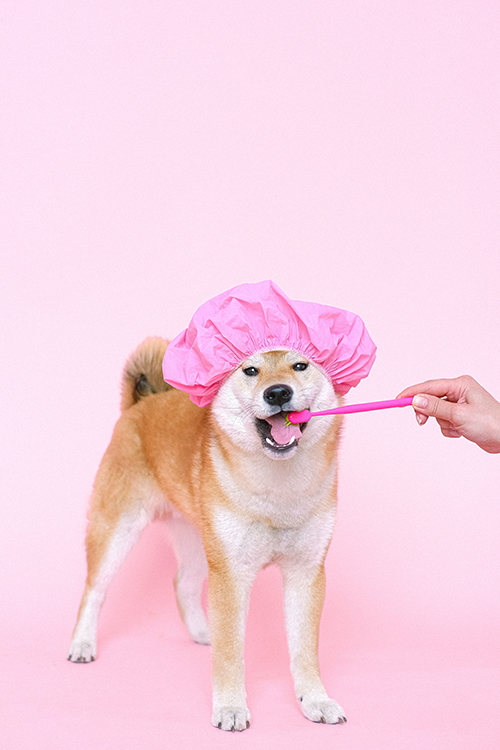Obviously, we cannot expect our pet patients to sit through a dental procedure voluntarily, still and with the mouth open. Therefore, a dental procedure must be done under general anesthetic. This allows us to assess the mouth properly, and perform dental x-rays, cleaning, and any necessary treatment without the problem of asking the pet to hold still.
So, what happens when we have a pet here for a dental cleaning/procedure? Once at the clinic, we perform a preanesthetic examination, to assess vital signs. Often, blood tests have been performed a few days before, determining health of the liver and kidneys, as these are the organs in the body which metabolize the anesthetic agents and eliminate them.
Once this baseline is established, the pet will receive an injection of a sedative (also called pre-medication). Once sedated, an intravenous line will be placed, to support blood pressure under anesthetic, and to provide easy access to administer the induction agents (to induce the anesthetic sleep). A veterinary technician will be always with the pet then to monitor vital signs, to keep the procedure as safe as possible.
The pet will be intubated with an endotracheal tube, and connected to the anesthetic machine, which will deliver the inhalant anesthetic mixed with oxygen. This will keep our pet sleeping and unaware during the procedure.
From this point on the procedure is like our own visits to the dentist. Dental x-rays will be taken, to be able to judge the teeth – are they healthy? Are there any signs of underlying issues? Then the veterinarian will assess the teeth by probing and evaluating the x-rays. Then cleaning of the teeth will be started, and usually the veterinarian will contact the pet parent to discuss need for treatment, or to report on the status of the procedure.
Once the teeth are cleaned, any teeth which are significantly affected by dental disease can be extracted. In specialty dental clinics advanced treatments of teeth can be done, like root canal treatment or capping of teeth. A local anesthetic will be placed before extracting teeth. Teeth affected by dental disease are extracted, the extraction sites cleaned (debrided) and then the site will be closed with sutures. This can take as much time as the extraction, or more.
After the procedure is completed, we prepare to discontinue the anesthetic. The animal will be extubated when ready, and then placed in a warm recovery bed. Monitoring will continue until the animal is recovered. Fluid therapy will be discontinued once it is safe to do so.
We like to keep our patients in hospital long enough to allow for complete recovery; however, sometimes our patients are still a bit “under the weather” when going home. We will take every precaution to educate our pet parents as thoroughly as possible on how to take care of their pets immediately following a procedure, and what to do if concerns arise. Usually, a follow-up appointment will be arranged to check on the mouth 2 weeks after a procedure. This is especially important if multiple extractions have been performed.
Now our pet does have a healthy mouth again, and most likely feels good about it! Take care everyone!
-By Dr. Susanne Krägeloh

